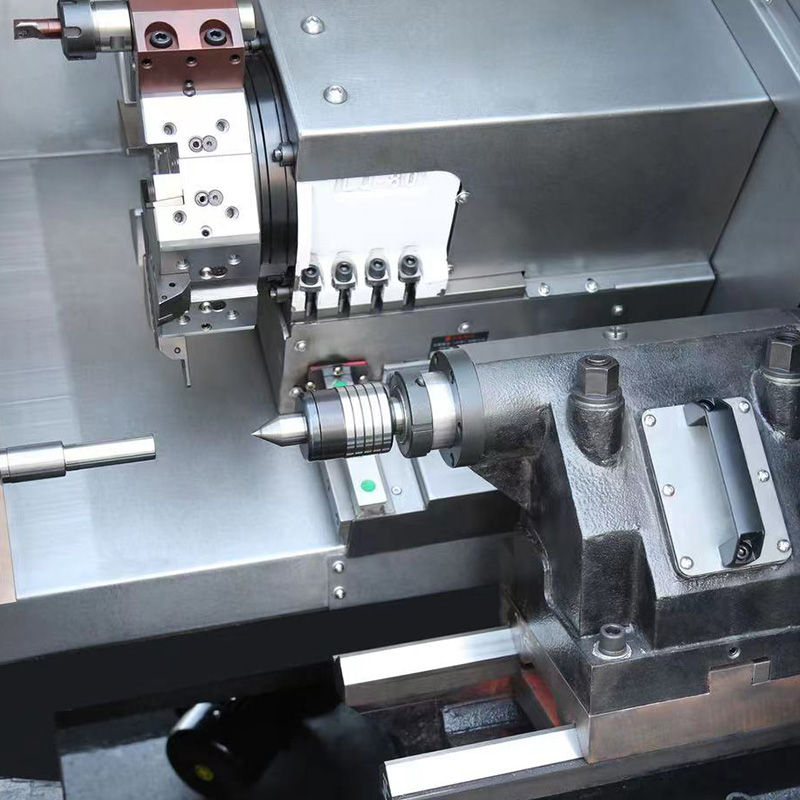CF32 Hydraulic Clamping CNC Polygon Turning Machine
Cat:Small Polygon Lathe
CF32 hydraulic clamping CNC polygon lathe is designed for milling small and medium-sized high-precision parts, which can mill square, octagonal, hexag...
See DetailsPrecision and efficiency are the hallmarks of modern manufacturing, and the CNC Polygon Lathe stands as a testament to these ideals. This advanced machine tool has revolutionized the way complex parts are produced, offering unparalleled accuracy and repeatability. As technology continues to evolve, so too do the techniques for optimizing CNC Polygon Lathe operations.
The CNC Polygon Lathe: A Brief Overview
Before diving into optimization techniques, it's essential to understand what a CNC Polygon Lathe is and how it operates. A CNC Polygon Lathe is a computer numerical control (CNC) machine tool designed for turning and shaping complex polygonal shapes with high precision. It is widely used in industries such as aerospace, automotive, and electronics for producing parts with intricate specifications.
Optimization Techniques for CNC Polygon Lathe Operations
1. Enhancing Machine Setup
- Proper Tool Selection: The choice of cutting tools is critical for achieving performance. High-quality, precision-ground tools can reduce machining time and improve surface finish.
- Tool Holder Rigidity: Ensuring that the tool holder is rigid and securely fastened can prevent tool deflection, which can bring about inaccuracies in the final product.
2. Improving Material Handling
- Automated Material Loading: Implementing automated systems for loading and unloading materials can reduce downtime and increase throughput.
- Material Quality Control: Regularly inspecting the quality of the materials being used can prevent issues that arise from using substandard materials.
3. Software Integration
- Advanced CAM Software: Utilizing the latest computer-aided manufacturing (CAM) software can help in creating more efficient toolpaths and reducing machining time.
- Real-time Monitoring: Implementing software that allows for real-time monitoring of the CNC Polygon Lathe's performance can help in identifying and rectifying issues promptly.
4. Enhancing Cutting Parameters
- Feed Rates: Adjusting feed rates to match the material being worked on can bring about significant time savings without compromising on quality.
- Cutting Speeds: Optimizing cutting speeds can improve material removal rates and reduce cycle times.
5. Maintenance and Servicing
- Regular Maintenance: A well-maintained CNC Polygon Lathe will operate more efficiently and have a longer lifespan. Regular servicing, including lubrication and cleaning, is essential.
- Preventive Measures: Implementing a preventive maintenance schedule can help in identifying potential issues before they become critical.
6. Operator Training
- Skill Development: Ensuring that operators are well-trained and up-to-date with the latest techniques can bring about more efficient operation of the CNC Polygon Lathe.
- Continuous Learning: Encouraging a culture of continuous learning can help operators stay abreast of new techniques and better practices.
7. Energy Efficiency
- Energy-Saving Modes: Utilizing energy-saving modes when the CNC Polygon Lathe is not in use can reduce energy consumption.
- Efficient Cooling Systems: Implementing efficient cooling systems can help in maintaining operating temperatures, which can improve the machine's performance and longevity.
8. Quality Control
- In-process Inspection: Regular in-process inspections can help in identifying deviations from the desired specifications early on, allowing for corrective actions to be taken promptly.
- Final Inspection: A thorough final inspection ensures that the parts produced meet the required quality standards.
9. Adopting Industry 4.0 Technologies
- Intelligent Sensors: The integration of intelligent sensors can provide real-time data on the machine's performance, enabling predictive maintenance and optimization.
- Data Analytics: Utilizing data analytics can help in identifying trends and patterns that can be used to further optimize the CNC Polygon Lathe's operations.

